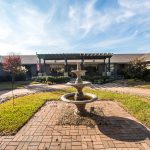Technology has come a long way since the days of nursing home in-room emergency pull-cords and lanyards for seniors with manual-activation emergency alert buttons. Fall detection and prevention systems are becoming more commonplace in nursing homes and seniors residences. It is a trend that Cambridge Realty Capital President Jeffrey Davis is seeing, both with new construction and being added to existing facilities. “Any technology that can save lives is worth investing in,” he remarks.
Falls are the number one cause of both fatal and non-fatal injuries in people aged 65 and older in the US, and the statistics are frightening:
* One quarter of all senior citizens will experience at least one fall in a year.
* Every 11 seconds, a senior is treated in an emergency room for a fall.
* Every 19 seconds a senior dies from fall-related injuries.
* The cost of treating fall-related injuries in seniors costs in the billions of dollars annually. In 2015, one of the most recent years for which information is available, that number was 50 billion dollars.
* Approximately 75% of the cost of treating fall-related injuries in seniors is borne by Medicare and Medicaid.
The earliest fall detection systems, including personal alarms and in-room pull-cords, were woefully inadequate. Unfortunately, many seniors were too injured or disoriented to reach emergency cords or personal alarm buttons to be attended to in a timely manner. However, it was the best that was available at the time, and a little bit of help is better than no help at all.
Things have changed considerably. Today’s systems go far beyond manual-activation cords and buttons. Take the smart floor, for example. Some nursing homes and seniors residences of today are being outfitted with these systems, which are textile underlays much like regular flooring underlay. It can be installed under just about any kind of flooring, including carpet, tile, laminate and wood, making the floor appear just like any other floor.
However, these smart floors are outfitted with highly-sensitive electronic sensors that detect movement over them. These sensors can tell the difference between ordinary footsteps and a large object (a person) falling on the floor. If a fall is detected, it sends a message to a monitoring system, which then alerts nursing home staff with an alarm.
Naturally, this type of a system can be costly, and is showing up mainly in newly-built nursing homes and seniors residences. Fortunately, there are other alternatives that are less expensive and easier to retrofit to existing/older facilities, like the smart stick. This device resembles a small stick and can be affixed to any wall. The device gathers information and sends it to a monitoring system which records the information, and which can send an alarm to a caregiver when a fall is detected. In addition to detecting falls, it is able to track other information, such as how much sleep a person is getting, how frequently they eat, and more.
These are just two examples. There are a number of different systems in existence, available at different price points. Many are very affordable, especially considering the amount of money they have the potential to save in medical costs for treating falls. Not only that, but because technology is always evolving, the cost of the materials required to manufacture and assemble these systems is always dropping, making the systems become more affordable.
Davis expects to see more facilities, both new construction and existing, to integrate these and other smart technologies. While their implementation may seem daunting to some facility operators, particular those in older facilities, “these systems are often very cost-effective in terms of the injuries and deaths that they are able to prevent.”




